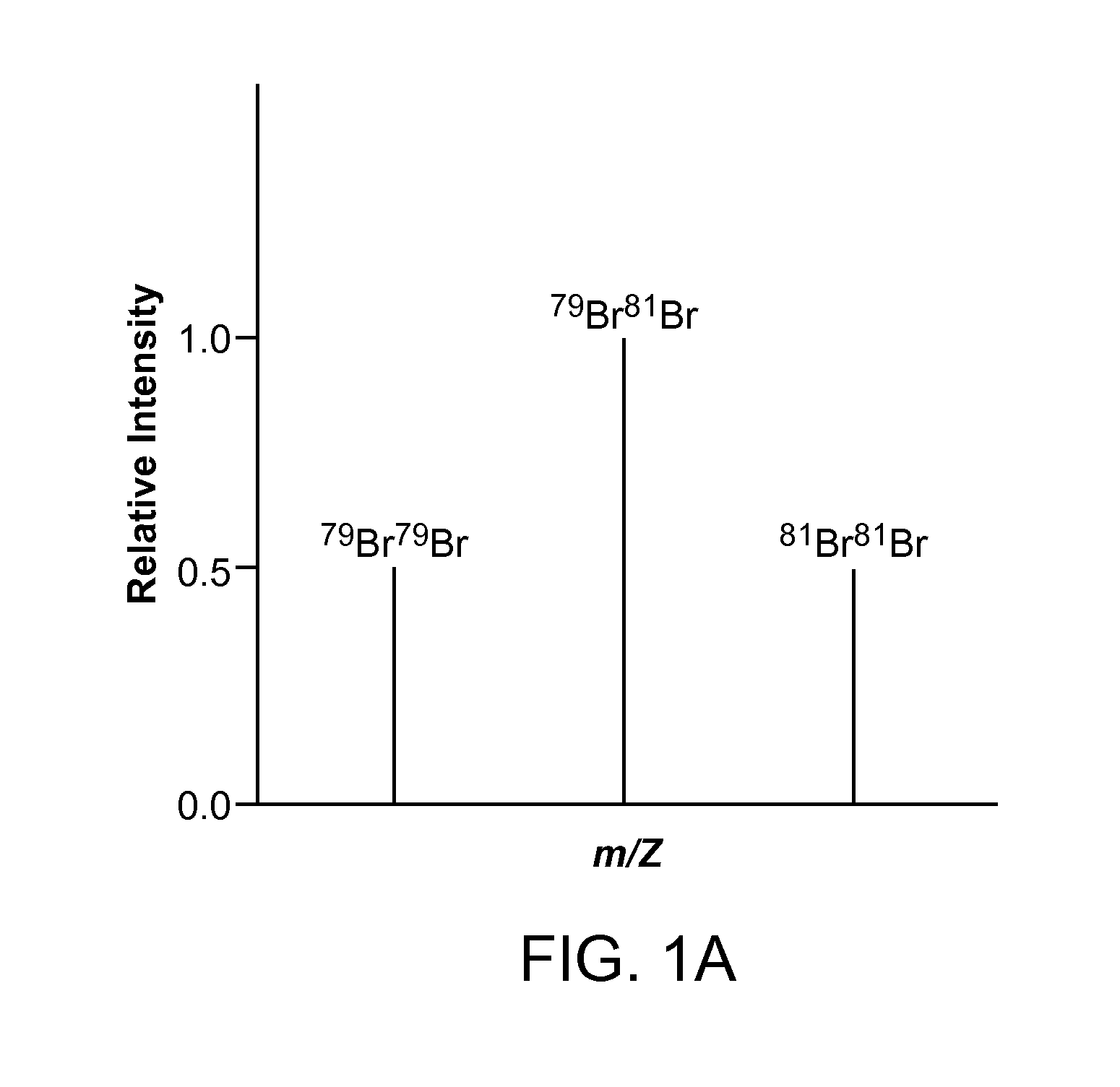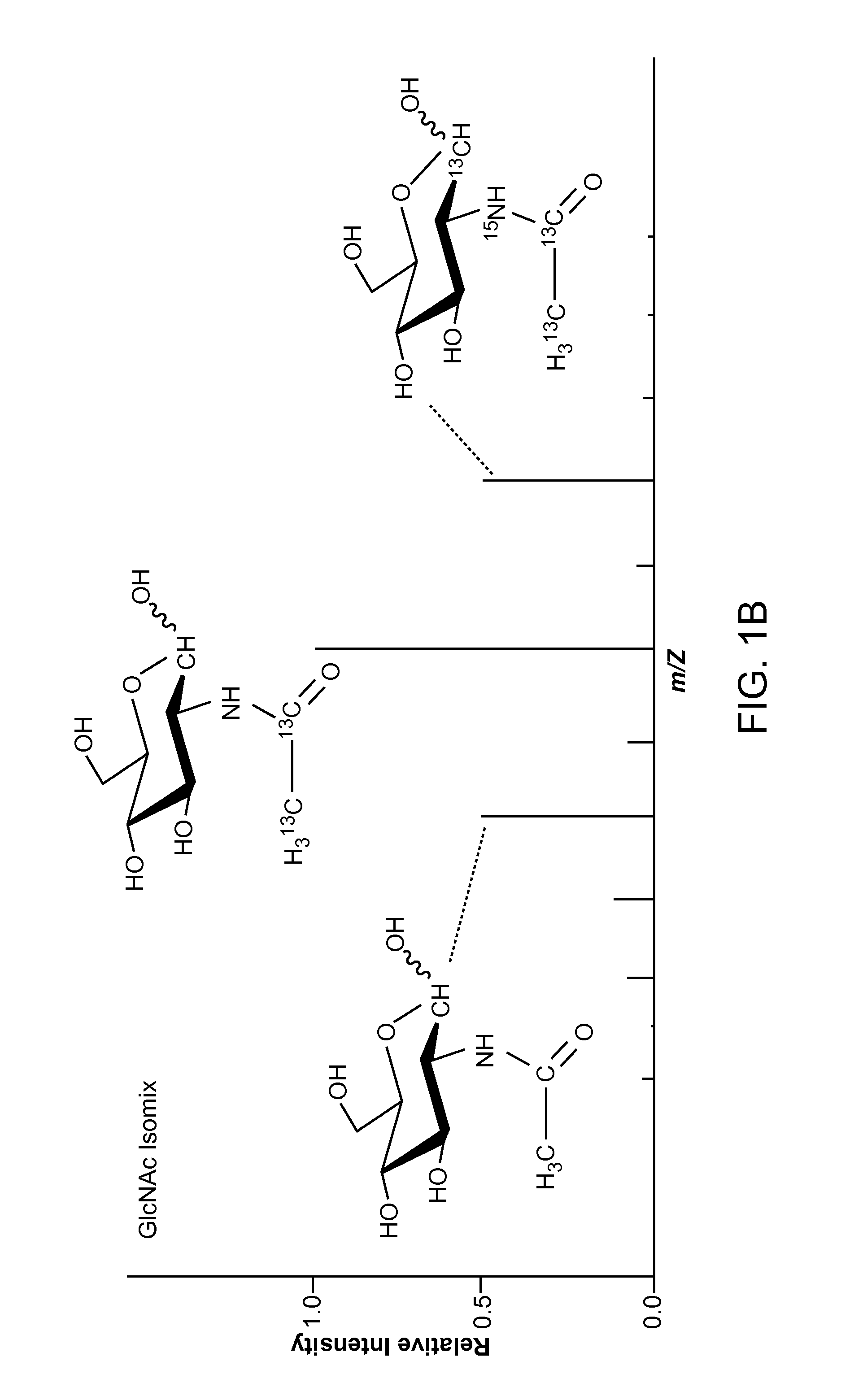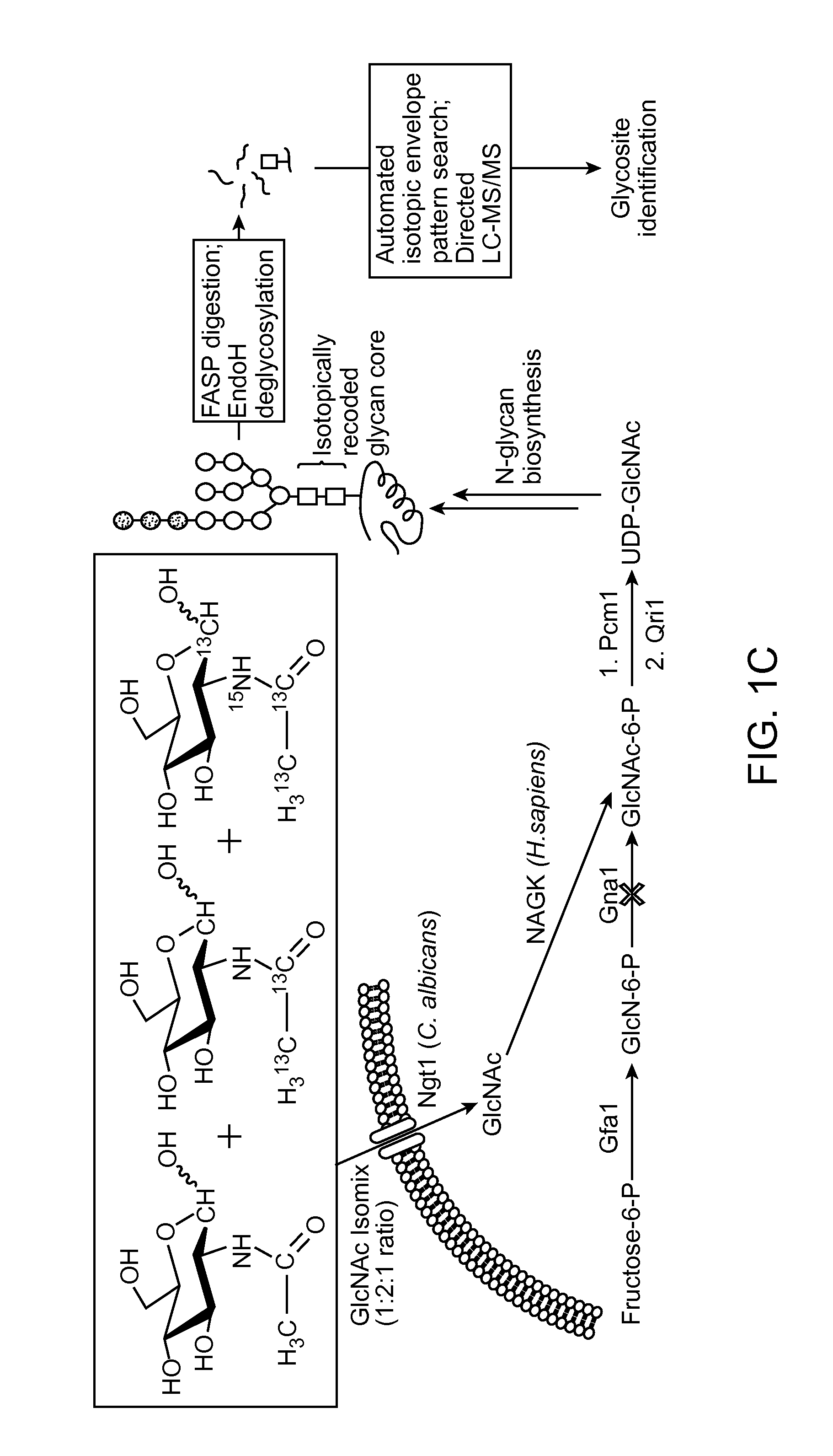Isotopic recoding for targeted tandem mass spectrometry
a tandem mass spectrometry and isotopic recoding technology, applied in the field of isotopic recoding for targeted tandem mass spectrometry, can solve the problems of reducing the ionization efficiency of glycosylation, difficult to achieve unambiguous assignment of ptm locations using existing lc-ms/ms methodology, and reducing the ionization efficiency of glycopeptides, so as to achieve the effect of boosting confidence in correct ptm
- Summary
- Abstract
- Description
- Claims
- Application Information
AI Technical Summary
Benefits of technology
Problems solved by technology
Method used
Image
Examples
Embodiment Construction
[0020]Aspects of the present disclosure include methods for detecting a low abundance protein in a complex mixture and methods for identifying a site of N-glycosylation on a protein. In practicing methods according to certain embodiments, a eukaryotic cell is contacted with an isotopic labeling composition and isotopically labeled N-glycosylated peptides obtained from the eukaryotic cell are assessed by liquid chromatography-tandem mass spectrometry. A predetermined isotopic pattern in the mass spectrum is identified and amino acid sequences of the peptides containing the predetermined isotopic pattern are determined Systems for identifying a predetermined isotopic pattern in mass spectra and determining amino acid sequences of peptides containing the predetermined isotopic pattern are also described.
[0021]The present disclosure provides methods and systems for identifying a site of N-glycosylation on a protein and for detecting a low-abundance protein in a biological sample. In cer...
PUM
| Property | Measurement | Unit |
|---|---|---|
| mass | aaaaa | aaaaa |
| mass shift | aaaaa | aaaaa |
| concentration | aaaaa | aaaaa |
Abstract
Description
Claims
Application Information
 Login to View More
Login to View More - R&D
- Intellectual Property
- Life Sciences
- Materials
- Tech Scout
- Unparalleled Data Quality
- Higher Quality Content
- 60% Fewer Hallucinations
Browse by: Latest US Patents, China's latest patents, Technical Efficacy Thesaurus, Application Domain, Technology Topic, Popular Technical Reports.
© 2025 PatSnap. All rights reserved.Legal|Privacy policy|Modern Slavery Act Transparency Statement|Sitemap|About US| Contact US: help@patsnap.com



